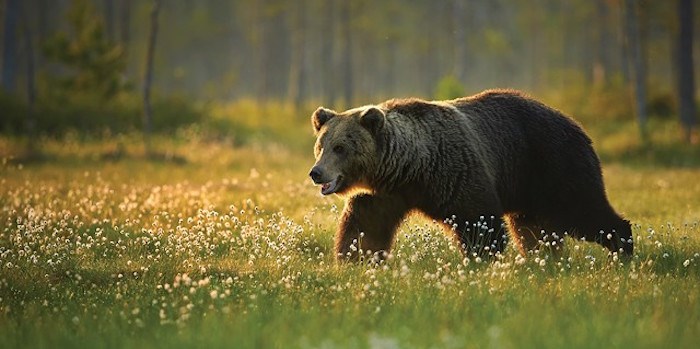As Sea to Sky grizzly bear populations continue to gradually increase in numbers, sightings of the species on local trails are becoming more common.
Yet so too are instances where people mistake black bears for grizzlies.
"It's difficult to tell the difference between a brown-faced black bear, and a grizzly bear in some instances," said Sgt. Simon Gravel of the Conservation Officer Service (COS).
According to Gravel, there are two principal reasons behind a jump in grizzly bear sightings in the last few years: growing population and an increase in backcountry users.
 Bear/Shutterstock
Bear/Shutterstock
"Combined together, you don't have to be a strong mathematician to come to the conclusion that the probability that people will encounter more grizzlies around here (will rise)," said Gravel.
One such misidentification, on July 22, led to a temporary closure of the Skywalk Trail, which starts in the Alpine Meadows neighbourhood and accesses the east side of Rainbow Mountain.
The trail was reopened three days later when it was determined that the bear in question was, in fact, a black bear.
Gravel said that because grizzly bears are a recovering species, conservation officers are vigilant about investigating sightings and taking measures to avoid conflict with humans.
A 2012 government report estimated there were 59 bears in the Squammish-Lillooet grizzly bear population unit, but biologists believe that the population has increased somewhat, with known success of females having cubs, including immediately west of Whistler in places like the Callaghan and Soo Valley. (The area is bordered by Whistler on its east side and includes the Squamish, Elaho and Ashlu drainages.)
Officers use a number of methods to determine the veracity of sightings, including looking at photos, interviewing witnesses, or travelling to the area in person.
"We are not managing black bears in the same fashion," said Gravel.
According to Johnny Mikes, field director of the Coast to Cascades Grizzly Bear Initiative, identifying grizzly bears can be hard.
"I've seen scores, and scores of grizzlies, and I've had instances where ... (I) haven't been able to identify them," said Mikes.
Mikes therefore recommends looking for three "telltale" grizzly bear traits: a prominent shoulder hump, long claws, and a "dished" face.
"A black bear has more of a Roman nose," he said.
People commonly associate grizzly bears with a brown fur coat—but that's not necessarily the case.
"Colour doesn't help you necessarily at all," said Mikes. "You can have brown black bears, (and) you can have grizzly bears that are very dark, especially when they're wet."
Size is also a problematic way to identify grizzlies, as a full-grown male black bear can be larger than a small female grizzly, he said.
If you do see either species, give it space, and even consider turning back, warned Mikes.
"Neither species is normally aggressive, and that includes grizzly bears," said Mikes. "But grizzly bears can be more aggressive than black bears when it comes to protecting their young and food sources."
Like Gravel, Mikes said an increase in trails and backcountry use is creating more human-grizzly interaction, and that the Resort Municipality of Whistler's (RMOW) Sproatt Alpine Trail Network, a new multi-use trail system that brings hikers and bikers up Mount Sproatt, is in grizzly bear country.
Overall, Mikes said that the RMOW could do a better job in terms of consulting with bear experts before creating trail systems. "There has, to date, not been good thought as to where you should build trails, other than from the perspective of advocates for trails," he said.
Mikes is therefore calling for better signage on Whistler trails, saying that the bear portion of new RMOW trail signage is minimal. He would like to see a stand-alone sign that includes a clear explanation on how to identify a grizzly bear's features and tips on how to travel safely through bear territory.
With more awareness that grizzlies are in the area, more people will call in sightings of them, said Gravel. And that, he feels, isn't necessarily a bad thing.
Even if backcountry users aren't "100-per cent" sure it's a grizzly, they should report it, he said.



